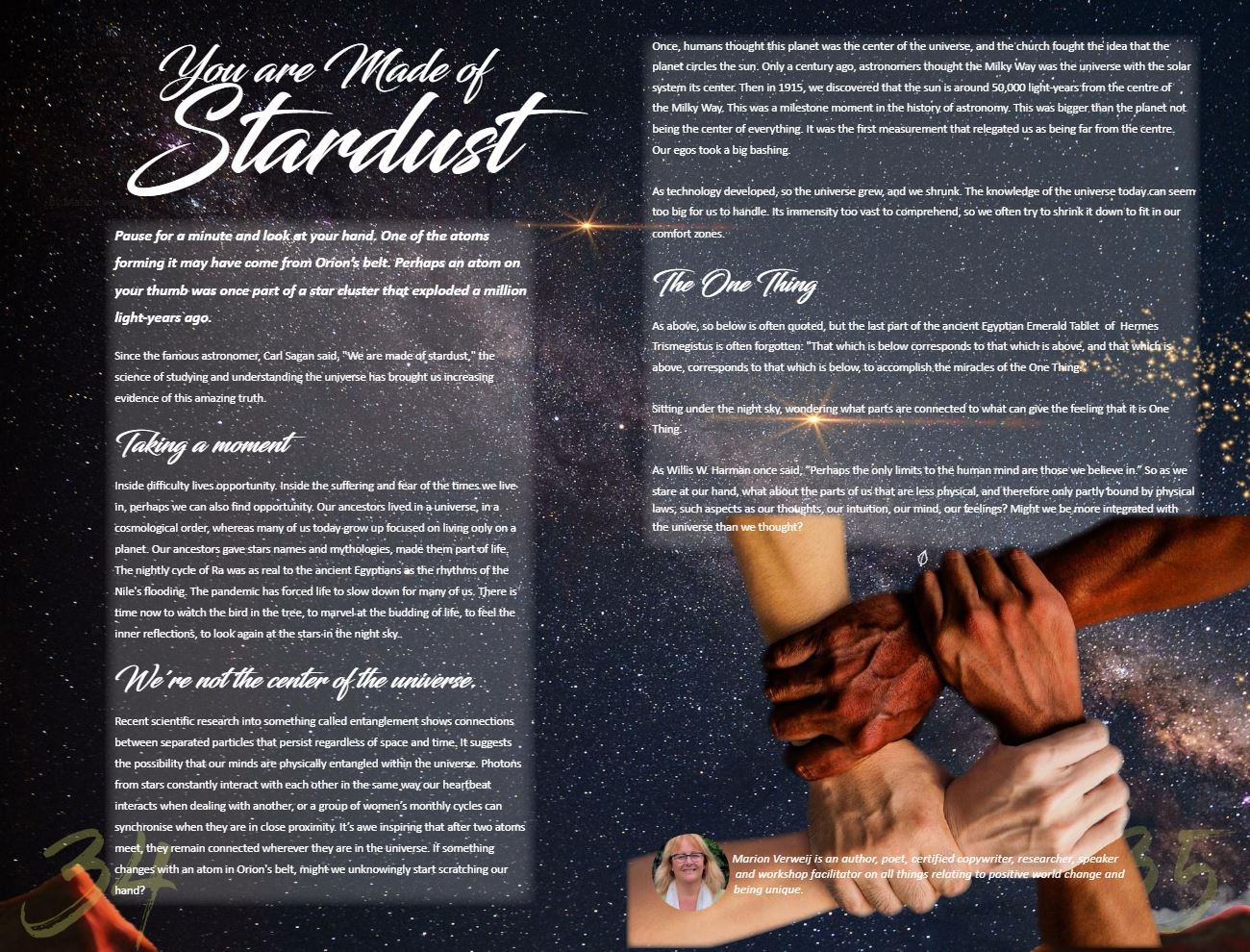Pause for a minute and look at your hand. One of the atoms forming it may have come from Orion’s belt. Perhaps an atom on your thumb was once part of a star cluster that exploded a million light-years ago.
Since the famous astronomer, Carl Sagan said, “We are made of stardust,” the science of studying and understanding the universe has brought us increasing evidence of this amazing truth.
Inside difficulty lives opportunity. Inside the suffering and fear of the times we live in, perhaps we can also find opportunity. Our ancestors lived in a universe, in a cosmological order, whereas many of us today grow up focussed on living only on a planet. Our ancestors gave stars names and mythologies, made them part of life. The nightly cycle of Ra was as real to the ancient Egyptians as the rhythms of the Nile’s flooding. The pandemic has forced life to slow down for many of us. There is time now to watch the bird in the tree, to marvel at the budding of life, to feel the inner reflections, to look again at the stars in the night sky.
Recent scientific research into something called entanglement shows connections between separated particles that persist regardless of space and time. It suggests the possibility that our minds are physically entangled within the universe. Photons from stars constantly interact with each other in the same way our heartbeat interacts when dealing with another, or a group of women’s monthly cycles can synchronise when they are in close proximity. It’s awe inspiring that after two atoms meet, they remain connected wherever they are in the universe. If something changes with an atom in Orion’s belt, might we unknowingly start scratching our hand?
Once, humans thought this planet was the centre of the universe, and the church fought the idea that the planet circles the sun. Only a century ago, astronomers thought the Milky Way was the universe with the solar system its centre. Then in 1915, we discovered that the sun is around 50,000 light-years from the centre of the Milky Way. This was a milestone moment in the history of astronomy. This was bigger than the planet not being the centre of everything. It was the first measurement that relegated us as being far from the centre. Our egos took a big bashing.
As technology developed, so the universe grew, and we shrunk. The knowledge of the universe today can seem too big for us to handle. Its immensity too vast to comprehend, so we often try to shrink it down to fit in our comfort zones.
As above, so below is often quoted, but the last part of the ancient Egyptian Emerald Tablet of Hermes Trismegistus is often forgotten: “That which is below corresponds to that which is above, and that which is above, corresponds to that which is below, to accomplish the miracles of the One Thing.”
Sitting under the night sky, wondering what parts are connected to what can give the feeling that it is One Thing.
As Willis W. Harman once said, “Perhaps the only limits to the human mind are those we believe in.”
So as we stare at our hand, what about the parts of us that are less physical, and therefore only partly bound by physical laws, such aspects as our thoughts, our intuition, our mind, our feelings? Might we be more integrated with the universe than we thought?












